
There was a false alarm on Monday, October 28, when at least one aldermanic newsletter announced that the City's Smart Streets pilot program would be starting that day. The initiative, spearheaded by the Chicago Department of Transportation and the Department of Finance, will use cameras to enforce laws against illegal standing and parking in bus and bike lanes. CDOT told Streetsblog that announcement was premature.
The City Council had approved the pilot way back in March 2023, and it was supposed to launch that summer. But more than a year and a half after that vote, the program still hadn't started. City officials blamed the delay on difficulty finding a suitable vendor for the cameras.
But there was some good news yesterday, Monday, November 4, when the pilot actually kicked off with a 30-day warning period. Currently, "registered vehicle owners will receive mailed warnings for infractions like parking in bike and bus lanes," CDOT stated. "Beginning on December 5, drivers will receive a warning notice for the first offense, with subsequent violations resulting in fines." In the near future, the technology will also used to enforce metered parking.
The pilot will take place in the Central Business District, in the area bounded by North Avenue, Ashland Avenue, Roosevelt Road, and Lake Michigan, roughly a three-mile by three-mile zone. The program will run for two years after it issues its first ticket, so likely until late 2026 or early 2027.
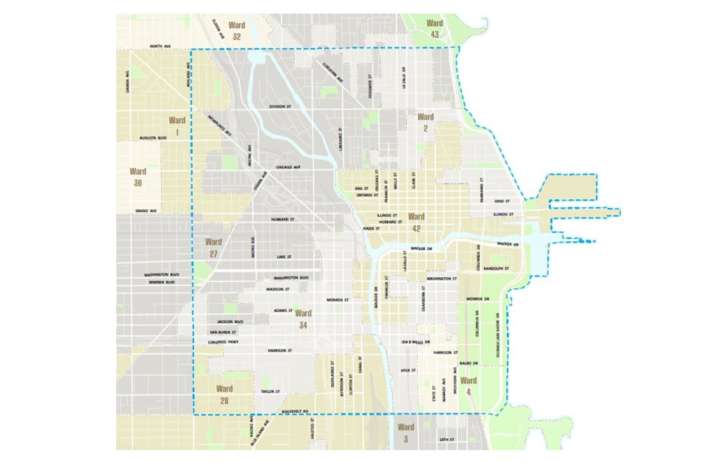
The benefits of better enforcement of bus and bike lanes should be obvious to Streetsblog Chicago readers. New Illinois legislation would be needed to legalize camera enforcement of driving in sustainable transportation lanes, which is already effective in peer cities like New York. But the new Chicago policy will encourage motorists to not park or stand in the lanes, which will help shorten transit trips, and make it easier for passengers with disabilities to board buses. Other vehicle drivers will also benefit from this, because bus operators won't be forced to leave dedicated bus lanes and merge into traffic to get around vehicles parked by scofflaws.
Likewise, bike riders won't need to leave bikeways and enter the mixed-traffic lane to get around stopped cars. That will make cycling safer and more comfortable, encouraging more riding.
The City held a press event yesterday at Chicago Avenue and Milwaukee Avenue in West Town. The former is one of our city's highest-ridership bus routes, while the latter is its busiest biking street.
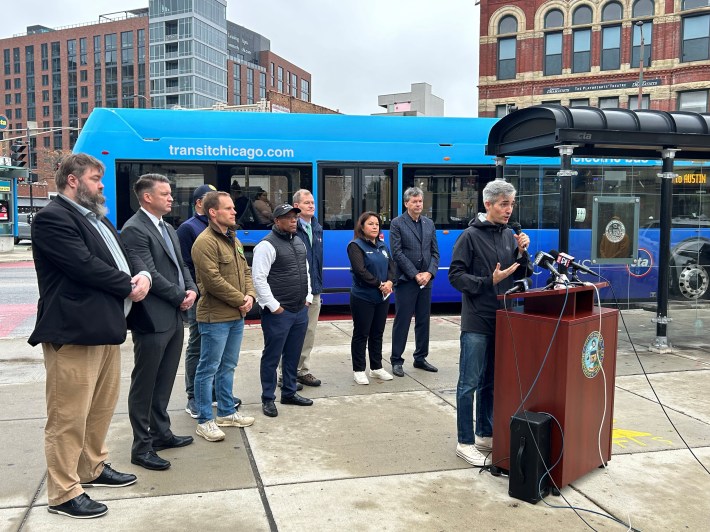
"Through automated technology to enforce parking violations in bus and bike lanes, this pilot program helps us improve transit reliability and protect our vulnerable road users," said Mayor Brandon Johnson, in a statement. He didn't attend the presser. "As we evaluate its impact over the next 30 days, I want to ensure our residents know we are not passing out fines. We are evaluating the impact of this technology to learn the best practices and will continue to work to refine our approach to make our streets even safer and more accessible."
As Streetsblog recently discussed, low-income Chicagoans are eligible for the Clear Path Relief Program. When this initiative launched in April 2022, it offered half-price tickets and a ticket debt forgiveness program.
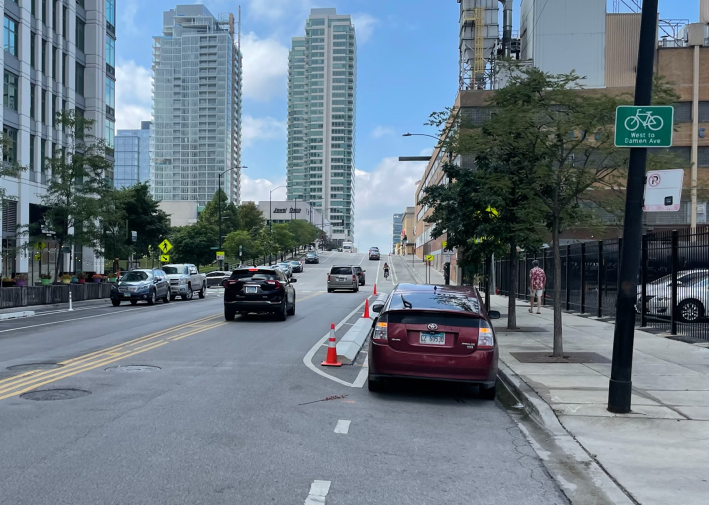
Unfortunately, today a City official told me that the price cut is no longer available to lower-income residents. "The Clear Path Relief program is still around and offers debt relief as outlined on the website, but no longer offers the 50 percent cost reduction in new tickets," they said. The City should reinstate that discount, since income-based fines would make both the Smart Streets pilot and the current proposal for a default 25 mph speed limit more equitable, and reduce the possibility of a backlash.
Before the Smart Streets program ends roughly two years from now, CDOT and the DOF are required to provide a report to the City Council evaluating whether the pilot was effective at improving parking compliance, safety, and efficiency. The departments have to share that study at least 120 days before the initiative concludes.
For starters, the program will involve eight City vehicles with dome-shared cameras installed on them to keep track of parking fouls. Next year, the CTA will place cams on up to six buses on high-ridership lines. The procurement process for the bus gear is currently underway.
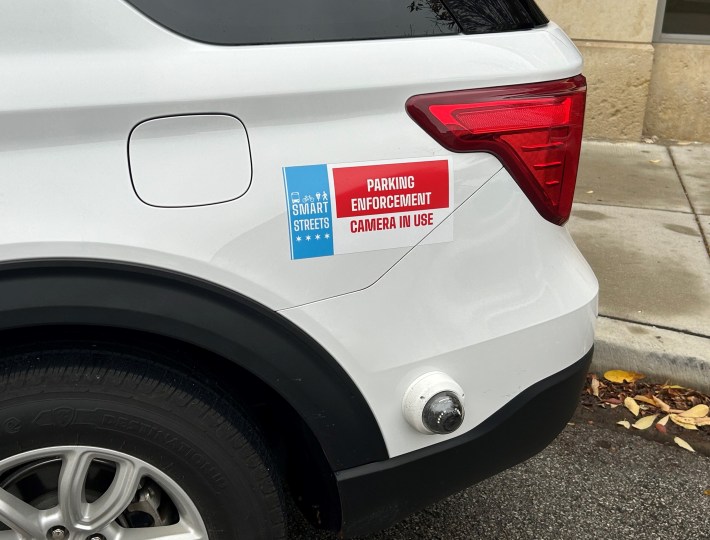
To get down to the nitty gritty of the Smart Streets program, here are some additional tidbits we've gleaned from the much longer FAQ page for the pilot, which you can read in full here.
Q: "What technology will the Smart Streets pilot use?"
A: "The pilot will use mobile automated license plate readers and additional cameras and equipment installed on City vehicles and eventually CTA buses."
Q: "Will the Smart Street pilot expand to other parts of the city?"
A: "Based on an evaluation of the program [the report delivered 120 days before the pilot ends], CDOT and DOF will work with elected officials to identify the next steps for the use of Smart Streets technology."
Q: "How much are the tickets?"
A: "The cost of the tickets would be the same as currently outlined in the municipal code." See below.
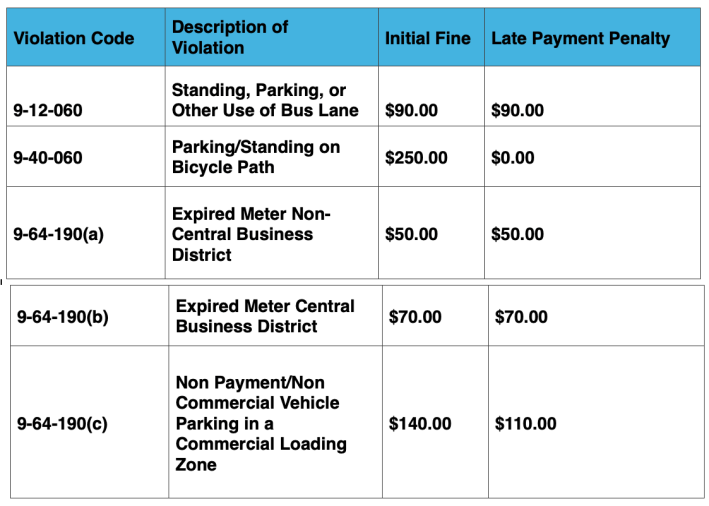
Q: "Will fixed cameras be part of the pilot program?"
A: "Because of concerns around cost, timeliness and scalability, CDOT and DOF decided to focus on mobile cameras for the pilot. This approach will allow us to prioritize hotspots and address issues as they come up rather than being tied to specific locations."
Q: "What bus routes will the CTA prioritize for the Smart Streets pilot?"
A: "While CTA has not finalized the bus routes that will be part of the Smart Streets pilot, they have identified Dearborn Street, Madison/Washington (Loop Link) and Chicago Avenue as priority corridors."
Other than the need to bring back income-based tickets, that all sounds pretty good to me. But what do local sustainable transportation advocates have to say about these glad tidings?
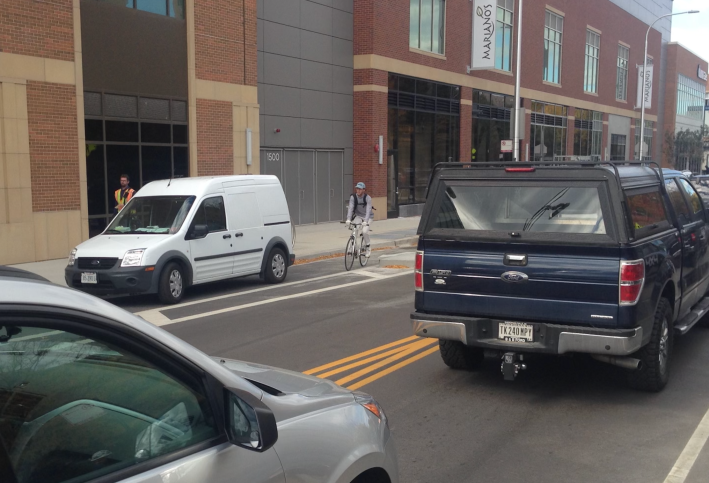
"The Smart Streets pilot is a step towards modernizing the city's transportation system and enhancing safety for everyone who uses our streets," said Active Transportation Alliance Communications Director Ted Villaire. "This initiative demonstrates Chicago's commitment to embracing innovative solutions that prioritize public transportation, cycling, and pedestrian safety while addressing the challenges of urban mobility in the 21st century... The pilot program approach will allow the city to learn about the effectiveness of this approach and to identify any unintended equity impacts, which will help inform any future permanent program design."
The grassroots transit advocacy group Commuters Take Action also voiced enthusiasm for the program. "[We're] excited to see CDOT implementing Smart Streets initiatives!" they said in a statement. "We hope that the CTA can expedite their delayed requisition and installation of these enforcement cameras. We look forward to the few miles of bus lanes within the pilot zone becoming the high-passenger throughput lanes. This pilot project will also enhance safety for those who opt for active transportation, ensuring cyclists have safe and unobstructed access to bike lanes."
Still hungry for Smart Streets knowledge? Learn more about the pilot at its website.

Did you appreciate this post? Please consider making a tax-deductible donation, to help keep Streetsblog Chicago's sustainable transportation news and advocacy articles paywall-free.





